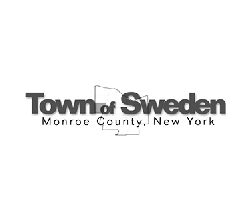Study shows rural areas continue to struggle

According to the U. S. Census Bureau, New York continues to lead the country in population loss and outmigration. And while some downstate counties have seen an uptick in population as people left New York City during the pandemic, rural counties are facing a net loss.
The Rural Housing Coalition commissioned the “State of Rural New York” report that outlines changes in the population, demographics, housing, and income characteristics of rural New York State from 2011 to 2020.
“New York’s rural counties are losing population at twice the rate of urban counties,” said Mike Borges, Executive Director of the Rural Housing Coalition of New York. “Chenango, Delaware, Franklin, Herkimer, Madison and Schoharie County populations each declined more than 6% between 2010 and 2020 – with Schoharie County losing 9.3%.”
For the report, Rural Counties are defined as those with at least 51% of the county population residing in “rural areas” – or municipalities with populations of less than 25,000. That excludes Albany, Schenectady, Onondaga, Broome, Monroe and Erie Counties, as well as Orange, Rockland and Westchester Counties, and the counties that make up New York City and Long Island.
In addition to population loss, the report shows that rural populations are, on average, older than their urban neighbors, have lower educational levels, and have lost more employment opportunities than urban counties.
“Older New Yorkers want to stay in their communities, but aging housing stock and the high cost of accessibility modifications make it hard to do so,” Borges continued. “That’s why we’re asking for a $3 million increase to the ACCESS to HOME program, which helps disabled and senior citizen homeowners pay for things like wheelchair ramps and bathroom handrails. This program’s budget has not been increased since 2012 and demand often outstrips available funding.”
The Rural Housing Coalition is also seeking $6 million for the RESTORE program, which was cut in the Executive Budget, which funds emergency repairs to low- and moderate-income seniors’ homes such as fixing a leaking roof or replacing a hot water heater.
In order for the state’s economic development efforts to succeed in rural communities, workers will need decent and affordable places to live. The Small Rental Development Initiative (SRDI), which was funded at $7 million last year and zeroed out in the Executive Budget, provides support for the construction or rehabilitation projects of small rental projects of up to 20 units that are more suitable for smaller villages and hamlets.
“In addition to individual programs, the “State of Rural New York” report illustrates the need to fully fund the Rural Preservation Program, or RPP,” said Borges. “The RPP has been underfunded for many years, with its last increase in 2017. Rural Preservation Companies that make up the RPP are the backbone of the state’s housing initiatives in rural areas. We urge policy makers to use this report to develop a comprehensive effort to reverse population decline through greater investments in housing and infrastructure that will grow rural economies.”
The Rural Housing Coalition of New York is a statewide organization dedicated to revitalizing rural New York by strengthening housing and community development providers. The coalition supports rural housing and community development providers through organizational capacity development, training and technical assistance, and raising public awareness and advocacy.
Review the full report as a PDF at https://ruralhousing.org/wp-content/uploads/2023-State-of-
Rural-New-York-Report.pdf.
Provided information





